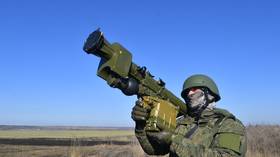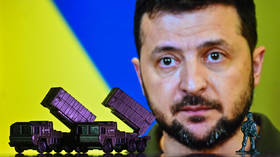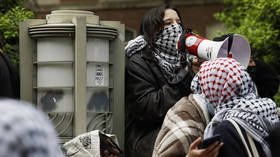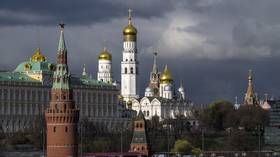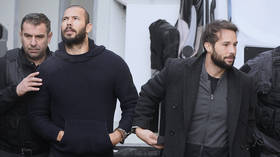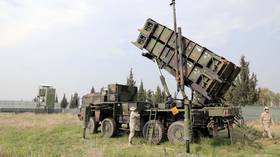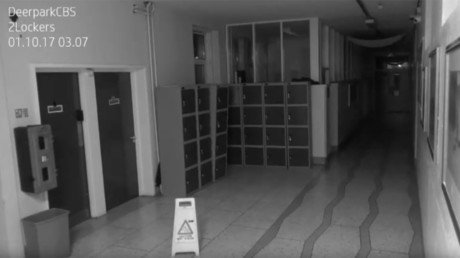Revolution is the new black: How Western money funds overthrow-your-government classes
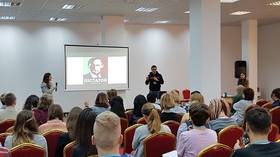
Everyone at this gathering in Yerevan is young, hip and determined, and they’re learning how to stage a revolution. RT Russian managed to get inside the protesters’ camp, funded by US cash, and see what is being taught.
The CampСamp 2018 forum in Yerevan was sponsored by the Prague Civil Society Centre, an organization financed by the United States under the Countering America's Adversaries Through Sanctions Act (CAATSA). Section 254 of the Act allocated $250,000 for activities to “counter Russian influence” in 2018 and 2019. Capitol Hill lawmakers seem to believe that this “Russian influence” is a threat to all NATO’s actual and potential members, including Georgia, Moldova, Kosovo, Serbia, and Ukraine.
The Yerevan gathering is proving that the State Department’s money is doing its job all right. Protest-lobbying spin doctors have been putting the money to ‘good use’ dragging more and more people into their skillfully woven web.
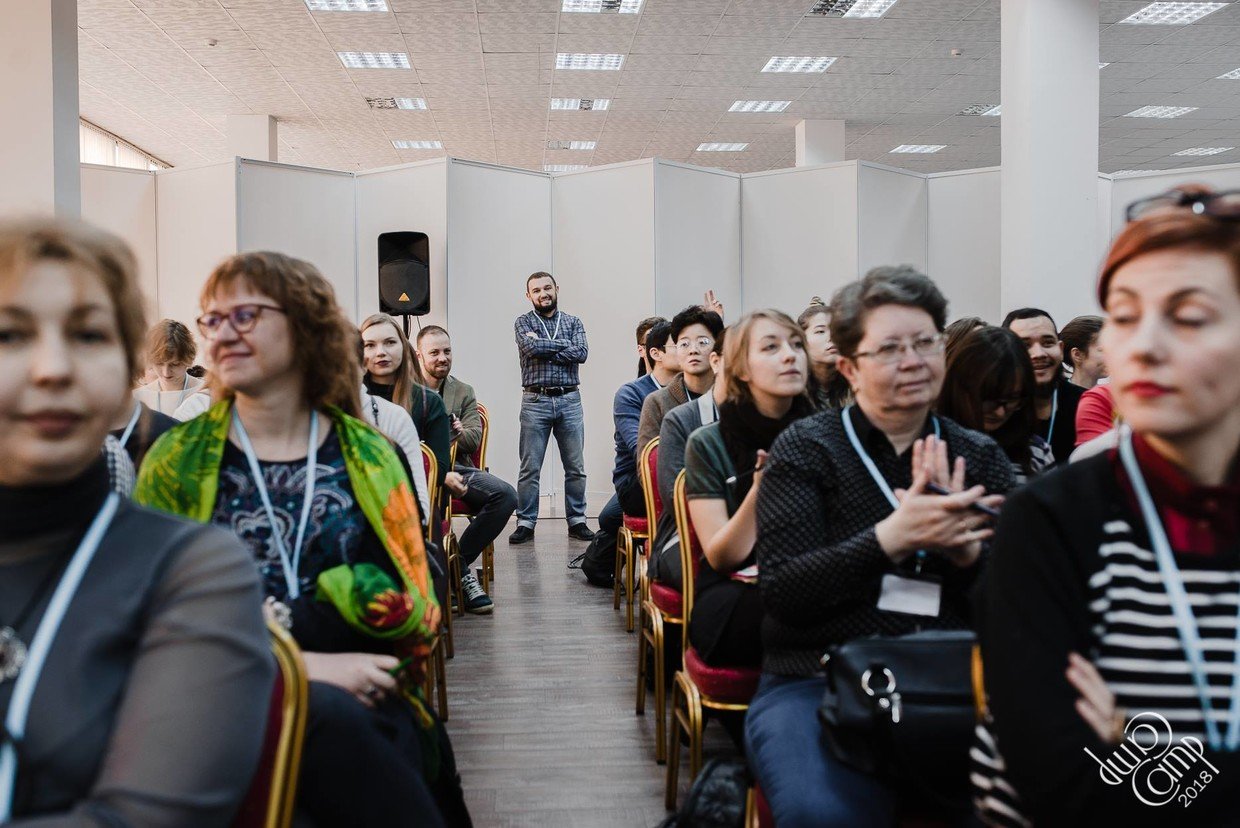
And it’s no coincidence Armenia was chosen to host the camp. After large-scale protests forced Prime Minister Serzh Sargsyan to resign, protesters from all over the Commonwealth of Independent States started flocking to Yerevan for more inspiration.
Trendy and Cheap
A total of 150 people participated in the forum; most were sponsored by the organizers from Prague. Local participants were hailed as heroes, and visiting young men and women from other ex-Soviet republics got their own injection of inspiration from their triumph. If Armenia could, they can, too.
The focus in CampCamp is on new technologies, on all things young and hip.
“Fighting the authorities must be the cool thing to do, it must be trendy,” teaches Nikolay Artyomenko, head of the opposition Vremya (Time) movement from St. Petersburg.
His portfolio is quite impressive. He put up banners on St. Isaac’s Cathedral protesting against the Orthodox Church taking over the museum. He ran a copy of the country’s constitution through a shredder, Banksy style, co-organized anti-corruption protests with rubber ducks; distributed “Dictator” prints where Putin was depicted like Obama in his “Hope” posters.
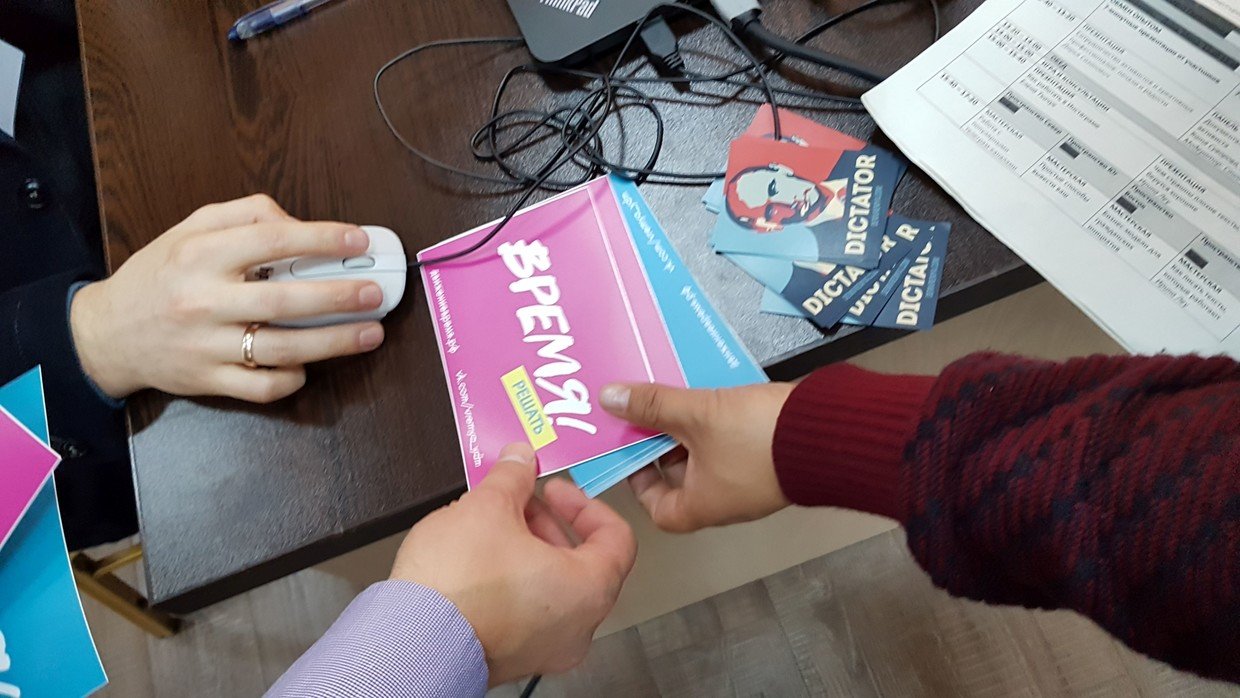
Nikolay teaches others to be creative and invent new ways to protest that should take over the old-school crowd with picket signs format.
“You have to stretch your imagination; there’s quite a problem on the protesting market these days. Protesting has become very expensive”, he shares. But Zhenya, an activist from Siberia, knows how to cut costs.
He just turned 18, yet he has already risen to stardom on the activist scene: his one-man protests have made front-page headlines in his city more than once. Each of Zhenya’s demonstrations is like a theatrical performance. He carefully selects props and plans according to the country’s Administrative Penal Code: “You have to make sure you violate different laws to avoid being double-fined.”
He’s locked in a long debate with Sasha from St. Petersburg about what kind of a public protest will get the smallest fine, and how to cut the “expenses”. Sasha is the more experienced of the two: he is already a law student and knows how to protest with minimal charges.
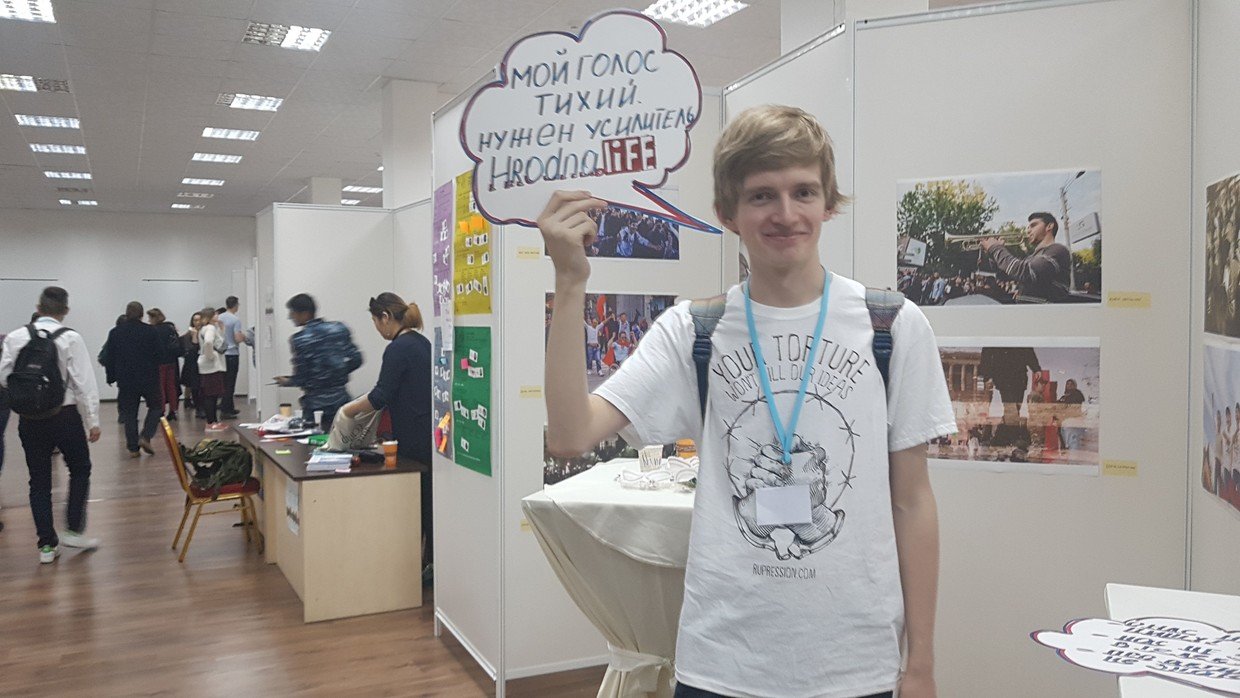
This is yet another important factor in making protesting popular. Protests should not be seen as something heroic that one pays too high a price for. Just slap a poster on a wall here and there, upload a stinging meme or at most join a protesting crowd, take a selfie in the police van, pay your fine and go home. In today’s world of social media, absolutely anyone can be a reporter, an expert, a critic or a TV journalist – so why not be a revolutionary?
“It is easy to get a grant; you can spend a month in the Czech Republic or work at Radio Free Europe or some think tank”, Michael Zolyan tells Polina from Omsk. Michael is “the frontman of the Velvet Revolution”, according to the organizers. By coincidence, he is also a Prague Civil Society Centre expert.
The CampCamp 2018’s most active group is the one from Kyrgyzstan. It’s a crowd of young journalists led by Bektour Iskender, founder of opposition web portal Кloop.kg.
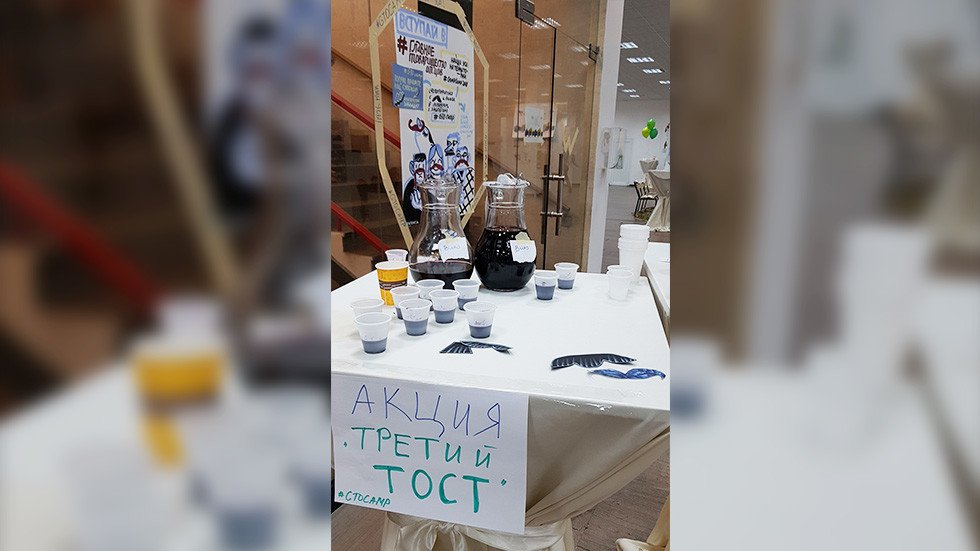
Bektour sees no harm that this “festival of democracy” is sponsored by foreign money. During the break, he confirms that his project is financed by the Prague Civil Society Centre.
“They treat me as an equal. They don’t try to be my boss, and I’m good with it”, he says.
Bektour’s workshop is called “How to fight things you hate doing what you like”. It looks like he has honed his skills to perfection and is quite happy doing journalism in Kyrgyzstan with US funding.
The workshop starts off very much like one of those self-esteem web courses where you have to write a list of things you don’t like about yourself; only instead of “I’m overweight” or “I’m single” you write down things that are wrong with your country, like “corruption,” or “totalitarianism,” or “Putin,” or “fake news,” or “no respect for children.” Masha, a student from Odessa seems to be unable to figure out what to write under “What do you hate most?” Instead of ”corruption” she finally settles on “sloppy eaters.”
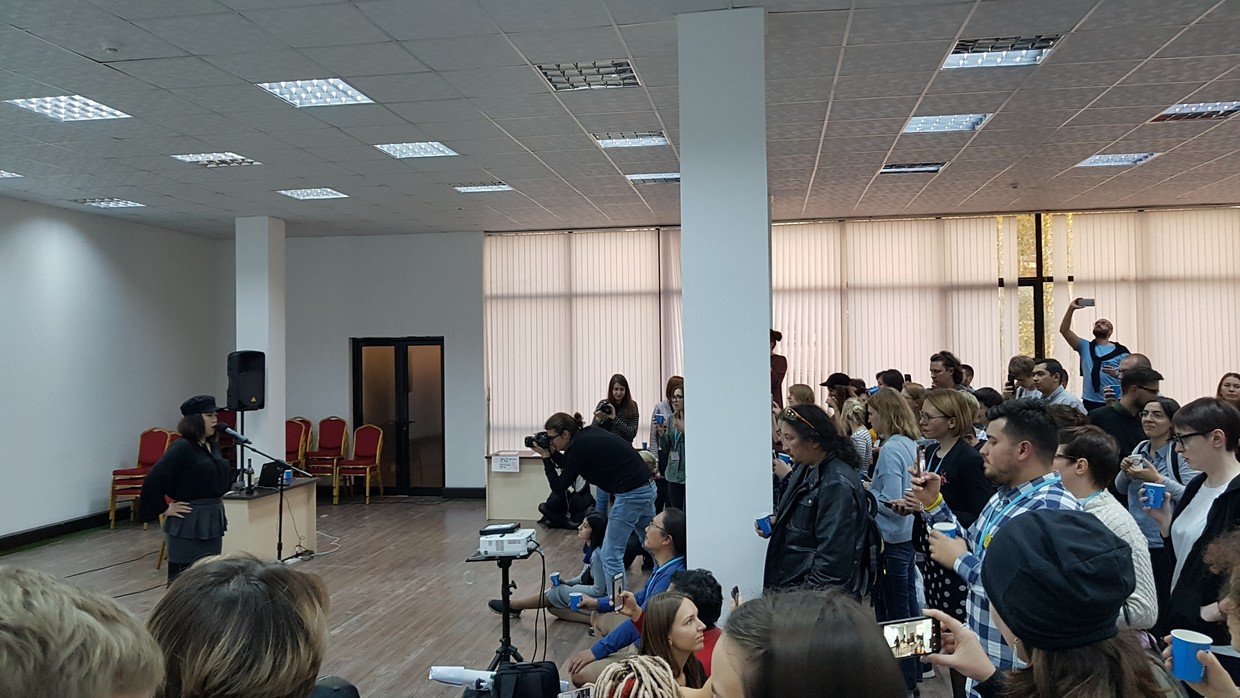
Step number two: think of a solution to the problem you’ve indicated using something you enjoy doing. Zhenya from Siberia and Boris from Dushanbe spend the next 15 minutes thinking of how they can overthrow the government while “sky gazing in the trees.” Sounds downright comical, but the guys admit freely that they don’t mind using falsification and manipulation for the right cause, if necessary.
“We can spread a rumor that the authorities are going to cut down trees”, they begin. The audience cheers them on. “Sure, that’s not true, but if we scare enough people, if we make them believe they are about to lose something good, that might help make them more active and start asking the government questions.”
Artist Dasha Sozanovich goes on to explain in her workshop how to use cool visuals for protest purposes.
“Pictures work for both good and evil,” she says. “The Islamic State’s (IS, formerly ISIS/ISIL) visual campaign is an example of how pictures served evil.”
Dasha’s own project called “Khabarstan” is, on the other hand, an example of how pictures serve the “good guys.” Her presentation makes Kazakhstan funding state TV channels much more exciting. Dasha points out that it was the Prague Civil Society Centre that united all those who collaborated on this project.
Переддень #Halloween запустили #Хабарстан. https://t.co/hHDeJys8dg no poka da. pic.twitter.com/PNTO5JisMq
— Vi (@vi_aliyeva) October 31, 2017
Dasha’s pictures do their best to help the viewers understand that spending state money on media is very wrong. No one mentions though that her time, meals, travel and lodging expenses have been fully covered from the state budget of the United States of America.
Two young artists are working away on their whiteboards creating stylish animations of the presentations they see, instead of taking notes the traditional way. That looks very cool, too.
“I decided to be an activist 11 years ago. It all started at a police station.” That’s a comic strip, where one of the artists captured the essence of what another star of the Armenian Revolution David Sansaryan was saying.
One more piece of advice young activists get here is that they should focus on social media, like Russian social networks OK.ru and VK.ru, as well as Facebook, since they can’t really compete with real media. The main goal is to elicit a response, get people to repost and comment on their publications.
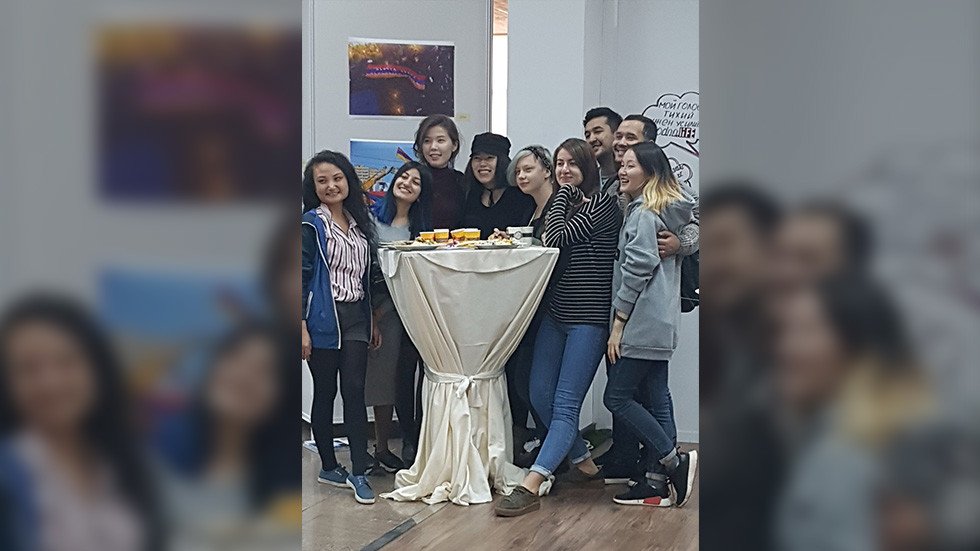
“It’s like something out of this world for us,” says a girl from Kazakhstan.
There are also young people from Russia and Belarus here, “dreaming to repeat Yerevan’s success.” Vanya from Perm confesses to the supportive audience that he came here to “export the revolution.” That’s exactly what our “friends” from Prague, Europe’s partisans of democracy are going to be teaching them all four days of the forum. However, the excitement he created gets killed by a word of reason from head organizer Maria Sereda. She reminds all those present about security and requests them to refrain from tweeting this catchy slogan, “or we’ll have Russian cameras all over the place in no time.”
“Let the Little Critters’ Anger Grow”
The forum also offers a handful of workshops on techniques that can be used to increase protest sentiment in society. One workshop uses the theme of Russian folk tales. In one of the cases, a “forest community” learns to interact with the government, i.e. the “Big Bad Wolf.” Speaking of overthrowing the “Big Bad Wolf of Belarus,” the head organizer says that there is only one to do it — to let the little critters’ anger grow over the years.
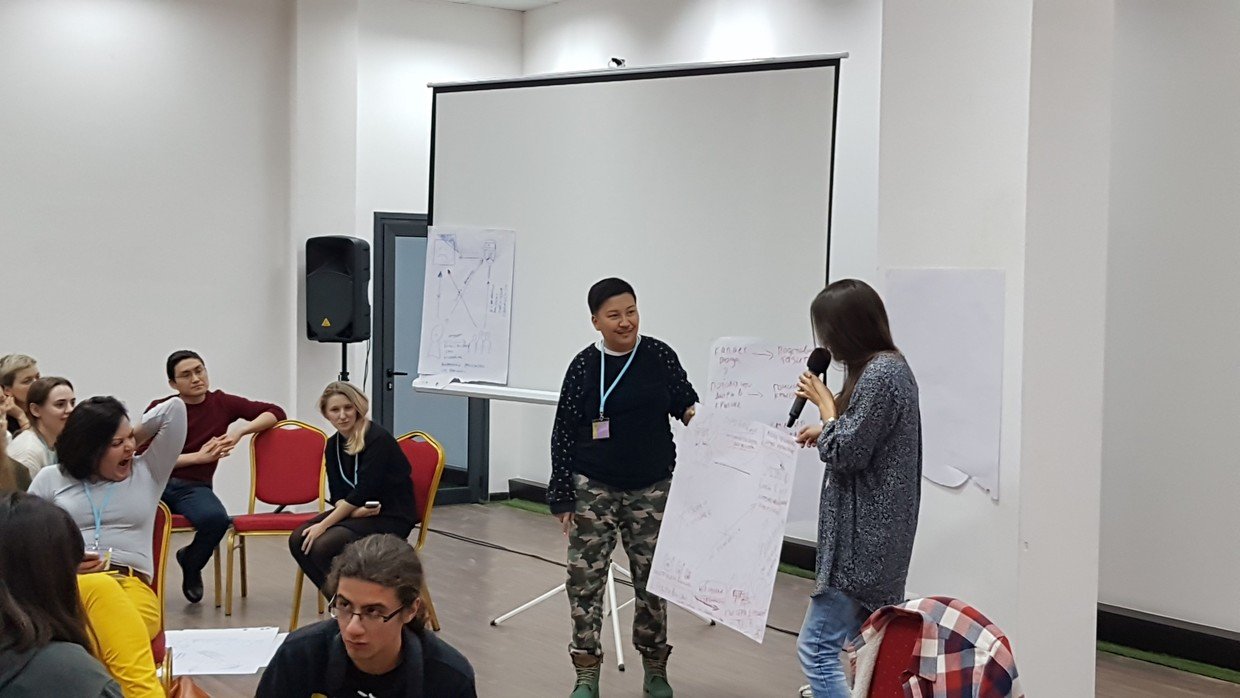
“You’ll have to let the little critters’ anger grow till you impeach the Big Bad Wolf,” Maria Sereda says cheerfully. “This case will work great for Belarus. And it has already worked for Ukraine!”
She continues to tell the audience about different anti-government strategies and mentions a number of organizations that have been successful in implementing them, including the International Crisis Group, co-founded by George Soros, and Amnesty International.
“They work quietly and softy”, Ms Sereda says. “They settle issues with the local governments very delicately.”
One more thing young activists are being taught here is how to identify the target audience. They need to aim for people who are most sensitive to liberal values propaganda. Those who do not mix with other activists and don’t attend protests are called a waste of time. It’s clear what kind of people are being talked about: if a person supports or is just neutral to Crimea rejoining Russia, they are not worth the effort. The main target audience is defined as large city residents aged 20 to 40 with a university degree and mid-range income. The speaker believes this segment has the most potential.
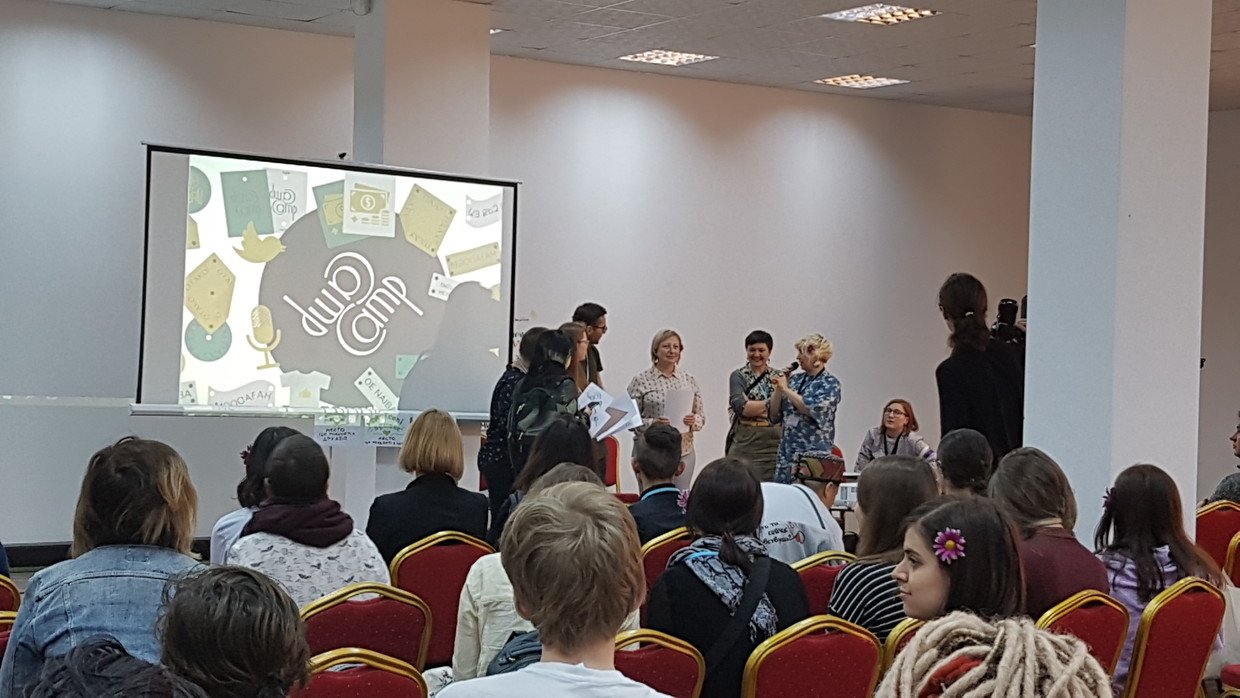
“You need to see who you’re talking to. Is that a loaded person with a reputation and power, or just someone who is so angry they might actually do something?” the speaker continues.
Overall, СampСamp is very reminiscent of school summer camps: fun activities by the day and get-togethers “by the fire” with a potluck in the evenings. “The most experienced revolutionaries” (from Kyrgyzstan and Kazakhstan, both “as stagnating as Russia”) have the best food. Many participants have met before, at the Boris Nemtsov Summer School in Prague. The “camp leaders” also know each other well. The more experienced participants are very friendly to all newcomers. I see Nick (Nicholas Detsch) from the United States give a warm welcome to a journalist from Kazakhstan.
Nicholas Detsch#lostOSCESMM #OSCEМісія #ОБСЄСММ #ОБСЕ#kyiv#USApic.twitter.com/Jc2S6F3glx
— Плюгавый суржик (@solomonmax) June 26, 2015
Nick introduces himself as an OSCE officer and recounts his rich experience working in Central Asia.
He takes the most interest in talking to those who came on their own initiative. He meets all the new people and takes notes in his little book.
Nick does not mention the fact that he works for the US Russia Foundation for Economic Advancement and the Rule of Law (an organization that was declared “undesirable” in Russia). His website profile, however, does mention the fact that Nicholas Detsch was one of the foundation’s first observers dispatched to Ukraine in 2014.
This article was initially published on RT Russian.
Subscribe to RT newsletter to get stories the mainstream media won’t tell you.


